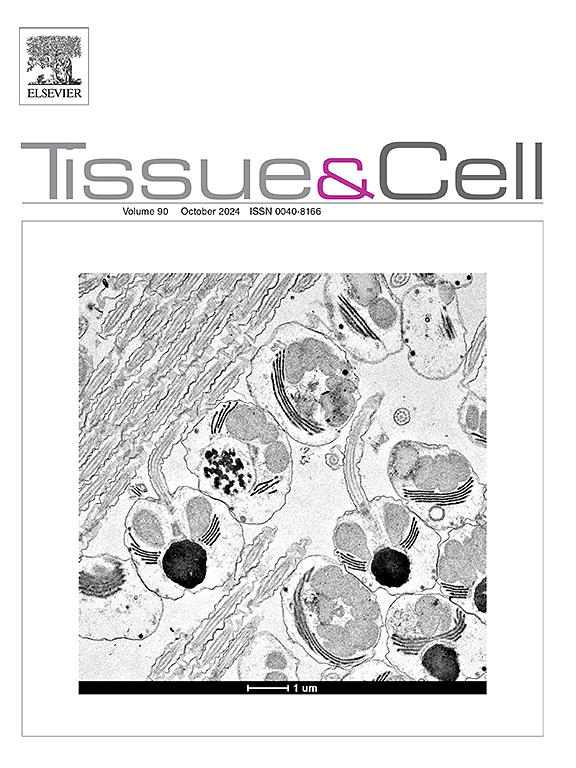幽门螺杆菌感染诱导STAT3/MYBL2/NF-κB轴促进胃癌进展
IF 2.7
4区 生物学
Q1 ANATOMY & MORPHOLOGY
引用次数: 0
摘要
幽门螺杆菌(h.p ylori)感染是胃癌(GC)发展的重要危险因素。MYBL2的致癌功能已在几种恶性肿瘤中报道,但很少有研究关注其对幽门螺杆菌诱导的GC进展的影响。我们分析了MYBL2在胃癌中的表达及其临床意义。在体外和体内诱导幽门螺杆菌感染。我们评估了MYBL2对细胞功能的影响,并在注射转基因GC细胞的裸鼠中评估了肿瘤的生长情况。我们发现幽门螺杆菌感染显著增加MYBL2的表达。下调MYBL2抑制幽门螺杆菌诱导的细胞增殖和迁移。MYBL2促进皮下异种移植物肿瘤的生长。综上所述,幽门螺杆菌感染通过激活STAT3上调MYBL2的表达,MYBL2是GC细胞中NF-κB激活的上游调节因子。综上所述,我们的研究结果表明,h.p ylori/STAT3/MYBL2/NF-κB轴在GC的调控中起关键作用。本文章由计算机程序翻译,如有差异,请以英文原文为准。
Helicobacter pylori infection induces STAT3/MYBL2/NF-κB axis to promote gastric cancer progression
Infection with Helicobacter pylori (H. pylori) represents a significant risk factor for the development of gastric cancer (GC). The oncogenic functions of MYBL2 have been reported in several malignancies, for which little research has focused on its effect on H. pylori-induced GC progression. We analyzed the expression and clinical relevance of MYBL2 in GC. H. pylori infection was induced in vitro and in vivo. The effects of MYBL2 on cellular functions were assessed, and tumor growth was evaluated in nude mice injected with genetically altered GC cells. We found H. pylori infection significantly increased MYBL2 expression. Downregulation of MYBL2 inhibited H. pylori-induced cell proliferation and migration. MYBL2 contributed to the growth of subcutaneous xenograft tumors. In conclusion, H. pylori infection upregulated MYBL2 expression by activating STAT3, and MYBL2 was found to be an upstream regulator of NF-κB activation in GC cells. In conclusion, our findings indicate that the H. pylori/STAT3/MYBL2/NF-κB axis plays a critical role in the regulation of GC.
求助全文
通过发布文献求助,成功后即可免费获取论文全文。
去求助
来源期刊

Tissue & cell
医学-解剖学与形态学
CiteScore
3.90
自引率
0.00%
发文量
234
期刊介绍:
Tissue and Cell is devoted to original research on the organization of cells, subcellular and extracellular components at all levels, including the grouping and interrelations of cells in tissues and organs. The journal encourages submission of ultrastructural studies that provide novel insights into structure, function and physiology of cells and tissues, in health and disease. Bioengineering and stem cells studies focused on the description of morphological and/or histological data are also welcomed.
Studies investigating the effect of compounds and/or substances on structure of cells and tissues are generally outside the scope of this journal. For consideration, studies should contain a clear rationale on the use of (a) given substance(s), have a compelling morphological and structural focus and present novel incremental findings from previous literature.
 求助内容:
求助内容: 应助结果提醒方式:
应助结果提醒方式:


